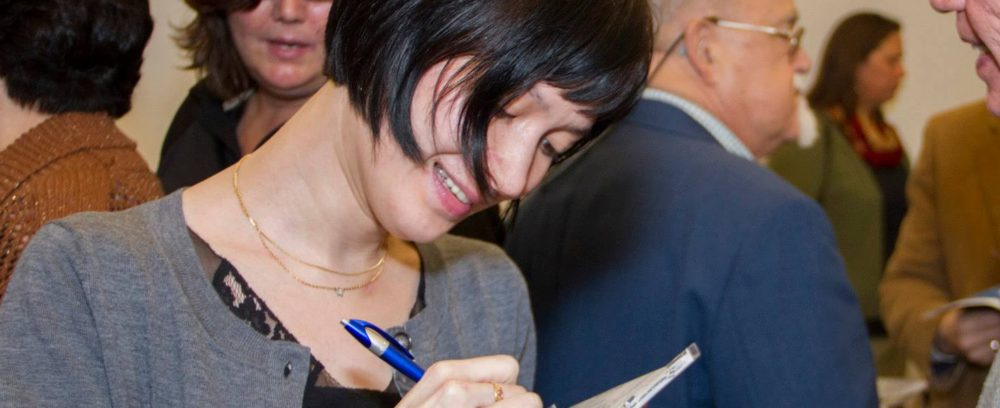A few people have asked me about my process and intentions with the pieces on my album “Melting the Darkness” (available from the Store page, release by Urlicht on Nov. 11). So I thought I’d take a quick moment to write some more about these things.
Unlike most of my albums, which were each recorded in one chunk of a couple consecutive days, this was recorded over three years. That’s because a couple of the pieces were being written and because I was seeking opportunities to perform the pieces before recording. Robert Rowe, like my father Robert, has a daughter named Miranda, and he titled his piece after a line from Shakespeare’s “The Tempest”, Act V scene i: “Melting the darkness”. I decided to use it as the title of the album because the phrase “melting the darkness” seemed to draw a thread among the works, of light and human warmth asserting itself.
The pieces on the album were originally going to be two projects, one microtonal and one electroacoustic, but I decided to put these seven pieces together since I felt the various strands of exploration bring it together effectively. The emotional heart of the album is Georg Friedrich Haas’ “de terrae fine”, an almost 20-minute, highly microtonal work of great emotional intensity and sustained quiet tension which builds to a wild, furious release. Oscar Bianchi’s sparkling “Semplice” provides a scherzando, spritely contrast after this, with microtones coming into play only in the middle section. Chris Burns’ piece is part of an ongoing adventure – he wrote it in response to our collaboration on Luigi Nono’s “La lontananza nostalgica utopia futura” for violin and electronics, a piece we both love and have performed around the country a number of times.
In the Burns and the three pieces preceding it, the violin sound was mic-ed up close and the sound was left much as is, so that the details of the physical action and the intimate quiet sounds – the friction noise of the bow, the creaking of the fingerboard under my fingers in the Xenakis – are intact and clearly audible. The Xenakis is the only piece here by a deceased composer. I began the album with it because I love it, it’s short and strong, and because its sliding double-stops that buzz with microtonal beating (as in Scelsi’s music) anticipate the microtonal experiments of today.
The three electroacoustic pieces were sound-mixed by the composers themselves. Ileana Perez-Velasquez’s is an older work of hers, which I was asked to play on a concert some years ago and enthusiastically included in my performing repertoire. There is some reverb on the recording but the violin sound is much as in live acoustic performance and is recognizably my own. I hear the work as a swirling jungle of animal, insect and water sounds, with the violin singing freely and rather folk-like.
In contrast to this evocation of howling emotion and the natural world, the Sigman and Rowe pieces inhabit a machine-made environment. The two pieces were obviously processed in the studio and the sound world is, at times, quite synthesized. I was intrigued to contribute my violin playing to such experiments – and to master the purposely uncoordinated extended-technique challenges of the Sigman – to see what the composers would create using my sound-making on an old wooden instrument as a component of their imaginings. This is the opposite of playing Ralph Shapey’s music for instance: Shapey, as a violinist, was focused on expanding the possibilities of traditional violin playing and the music demands the traditional qualities of warm cantabile tone, refined intonation, defined rhythmic articulation from the bow, and so on. I enjoy working between these poles of interest in the use of the instrument and combining it with other sounds.
Regarding recordings: I love to perform, with all the glories and fun of personal interaction, ephemeral experience and risks and goof-ups that it entails. In recording, I always am aware and playing for the audience that’s going to hear it, like a time-phasing where they are not present yet but they will be. During the process of recording, I enjoy the focus on the sound itself and the chance to explore many ways of playing a passage or a piece. Of course most recordings are edited these days. I enjoy the sculpting of an interpretation from various possibilities I’ve recorded in the studio. Because I’ve recorded a lot, there are people who think I’m about the modern cliché of perfection, but my editing process is not fussy (you’re welcome to my edit charts and raw takes if you ask me nicely for them). I became a musician for the music, not for some kind of technical perfection. Nonetheless, I do work hard on my craft and there are big sections in my recordings (Shapey Sonata No. 1 as one example) that are one take. I don’t like to brag but it’s frustrating when people assume you edited it all so you must not be able to play like that 🙂
Hope you’ll enjoy checking out the music on the new album. Wishing everyone a wonderful season!
